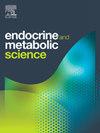通过贝叶斯网络增强糖尿病风险评估:对皮马印第安人的深入研究
Q3 Medicine
引用次数: 0
摘要
本研究旨在利用贝叶斯网络(BNs)加强糖尿病(DM)风险评估,并探索其在皮马印第安人中进行风险推断的独特能力。主要目标是超越传统的二元糖尿病分类,转而关注疾病风险的综合估计,考虑到风险因素的复杂相互作用。该研究采用了完善的皮马印第安人数据集来评估糖尿病风险。bp被用于模拟风险因素之间复杂的相互依赖关系,并提供对疾病易感性的细致理解,包括用于推断未知节点概率的贝叶斯风险推理。采用逻辑回归(LR)作为比较基准来强调bn的优势。BNs在训练数据集上的AUC值优于传统LR,这证明了它具有明显的优势。这一结果突出了bp网络捕捉复杂变量相互作用和执行风险推理的能力,从而提高了预测准确性。该研究还表明,尽管测试数据集的AUC略有下降,但bp网络对真实数据分布细微差别的适应能力仍然很强。本研究证实了BNs在增加糖尿病风险评估方面的效力。bp的整合阐明了变量之间复杂的相互作用,并实现了全面的风险评估,利用贝叶斯风险推理进行细致入微的评估。该研究强调了bp在阐明复杂因果关系方面的关键作用,为利用贝叶斯方法进行健康风险预测做出了更广泛的贡献。研究结果强调了个性化医疗干预的潜力,旨在管理糖尿病和减轻其社会负担。本文章由计算机程序翻译,如有差异,请以英文原文为准。
Enhancing diabetes risk assessment through Bayesian networks: An in-depth study on the Pima Indian population
This study aimed to enhance diabetes mellitus (DM) risk assessment using Bayesian Networks (BNs) and explore their unique capability for risk inference within the Pima Indian population. The primary goal was to move beyond traditional binary DM classification and instead focus on a comprehensive estimation of disease risk, considering the complex interplay of risk factors. The study employed the well-established Pima Indian dataset to assess diabetes risk. BNs were utilized to model the intricate interdependencies among risk factors and provide a nuanced understanding of disease susceptibility, including Bayesian risk reasoning for inferring probabilities of unknown nodes. Logistic regression (LR) was employed as a comparative benchmark to underscore BNs' advantages. BNs demonstrated a distinct advantage over conventional LR, as evidenced by their superior AUC value on the training dataset. This outcome highlighted BNs' capacity to capture intricate variable interactions and perform risk inference, thus enhancing predictive accuracy. The study also showcased BNs' resilience to real-world data distribution nuances, despite a slight decline in AUC on the testing dataset. This research substantiates the potency of BNs in augmenting diabetes risk assessment. The integration of BNs illuminates complex interplay among variables and enables a comprehensive risk evaluation, leveraging Bayesian risk reasoning for nuanced assessments. The study underscores the pivotal role of BNs in elucidating intricate causal relationships, contributing to the broader discourse on leveraging Bayesian methods for health risk prediction. The findings underscore the potential for personalized healthcare interventions aimed at managing DM and mitigating its societal burden.
求助全文
通过发布文献求助,成功后即可免费获取论文全文。
去求助
来源期刊

Endocrine and Metabolic Science
Medicine-Endocrinology, Diabetes and Metabolism
CiteScore
2.80
自引率
0.00%
发文量
4
审稿时长
84 days
 求助内容:
求助内容: 应助结果提醒方式:
应助结果提醒方式:


